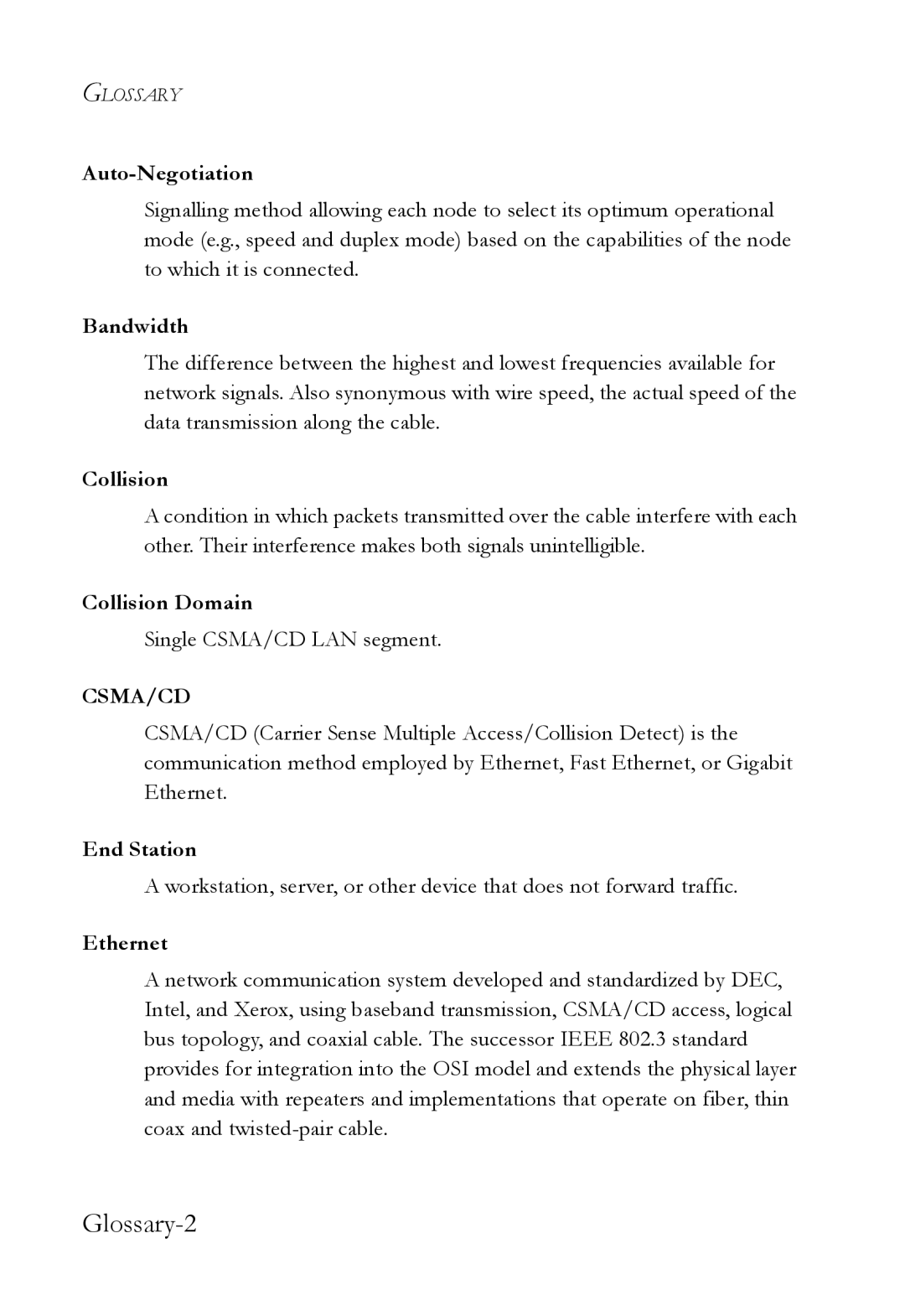SMC7824M/FSW specifications
The SMC Networks SMC7824M/FSW is a robust and versatile managed switch designed for small to medium-sized enterprises that require reliable networking solutions for their growing needs. This switch is part of SMC's commitment to providing innovative networking products that deliver superior performance and flexibility.One of the main features of the SMC7824M/FSW is its 24-port configuration, which provides ample connectivity for a variety of devices within a network. The switch supports both 10/100 Mbps Fast Ethernet and 10/100/1000 Mbps Gigabit Ethernet connections, allowing for seamless integration of multiple devices ranging from legacy systems to modern high-speed applications. This flexibility is crucial for businesses looking to extend the life of existing equipment while still adopting new technologies.
The SMC7824M/FSW is equipped with advanced Layer 2 management capabilities, including VLAN (Virtual Local Area Network) support, which enables network administrators to segment traffic for improved performance and security. Additionally, it supports Spanning Tree Protocol (STP) and Rapid Spanning Tree Protocol (RSTP), which ensures loop-free network topology and enhances network stability.
Another significant feature is the switch’s Quality of Service (QoS) functionality, allowing for prioritization of critical data traffic. This is particularly beneficial for voice over IP (VoIP) and video conferencing applications, where latency and jitter must be minimized to ensure optimal performance. With QoS, businesses can maintain high levels of service, even as network demands increase.
The SMC7824M/FSW also includes features such as port mirroring for traffic analysis and troubleshooting, Link Aggregation for increased bandwidth and redundancy, and an easy-to-use web-based interface for straightforward configuration and management. This ease of use makes it an excellent choice for IT administrators who may not have extensive networking experience.
In addition to its extensive feature set, the SMC7824M/FSW is designed with energy efficiency in mind. It complies with IEEE 802.3az Energy Efficient Ethernet standards, allowing it to consume less power during periods of low traffic, thus reducing operational costs.
In summary, the SMC Networks SMC7824M/FSW switch is a powerful solution that combines flexibility, advanced management features, and energy efficiency, making it an ideal choice for businesses looking to enhance their networking capabilities while remaining cost-effective. Its comprehensive set of features ensures that it can meet the demands of modern network environments.
